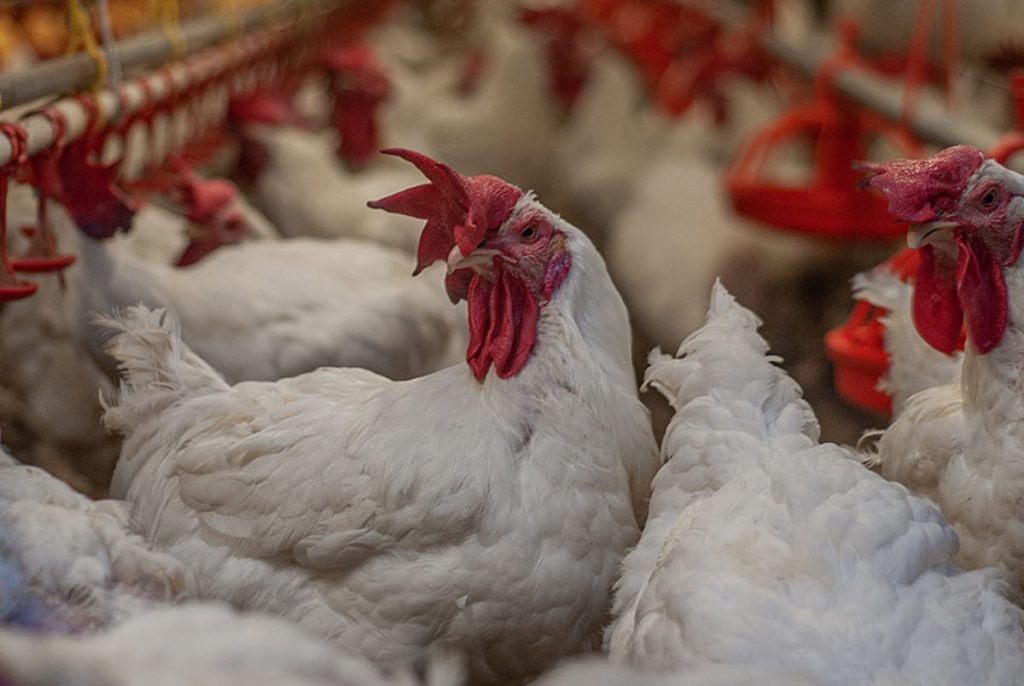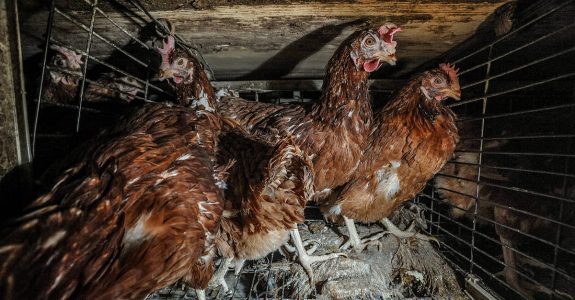As bird flu continues to rip through Canada, farmers are killing off entire barns full of chickens and ducks.
The recent H5N1 avian influenza epidemic was first detected in Europe last year, and has since spread to Canada in recent months. Bird flu has now been detected in almost all Canadian provinces.
According to the Canadian Food Inspection Agency, at least 1,372,400 birds in commercial farms and backyard flocks have been impacted by bird flu. It’s not exactly clear how many of these birds have been killed, but it’s safe to assume that most birds who were impacted by the virus would have been slaughtered. Recent news reports confirm that at least 184,000 birds have been killed in Ontario, 160,000 in Alberta, and another 150,000 birds are set to be killed in Quebec. Most of these birds were likely just babies—chickens raised for meat are slaughtered at six to eight weeks of age.
#BirdFlu continues to ravage farms across the country, & has resulted in the recent heartbreaking deaths of hundreds of thousands of birds. We desperately need to stop factory farming to protect public health & to spare animals from needless suffering.https://t.co/GzK8uXx1Kg
— Animal Justice (@AnimalJustice) April 12, 2022
While bird flu occurs in the wild, it incubates and spreads quickly on factory farms. In Canada, and in much of the developed world, the vast majority of modern chicken, duck, and turkey farms are massive-scale, industrialized operations, where thousands of birds are forced to live in cramped, filthy conditions. One barn at a chicken farm can be filled with tens of thousands of birds.
When a bird flu outbreak occurs on a farm, farmers often mass kill their entire flock, in a process known as farm “depopulation”.
But how does a farmer kill thousands of birds at once? On large farms in Canada, depopulation is usually achieved through the form of C02 gassing, which studies have shown can be incredibly painful for animals. On smaller farms, farmers can perform “cervical dislocation”—which involves killing a bird by violently snapping their neck.

Like most farming practices, mass culls happen behind closed doors, away from public view. The cruel methods that are typically used to kill entire barns full of animals are considered legal in Canada, falling under the animal welfare law exemption for “standard farming practices”.
Other standard farming practices that are exempt from animal protection laws include slicing off birds’ beaks without anesthetic, confining gentle hens in battery cages that are so small, they can’t spread their wings, and tossing live newborn male chicks into macerators because they can’t lay eggs. On modern farms, birds and other animals endure heartbreaking suffering that would be considered illegal if done to a cat or a dog.
And when it comes to bird flu, it’s not just animals who are at risk. Bird flu outbreaks in factory farms could allow the disease to mutate and more easily be passed onto the human population. Bird flu has caused several epidemics in recent history, causing illness and death in people in Europe, Africa, Asia, the Pacific, and the Middle East. The first human case of avian influenza A(H5) virus has just been detected in a person in Colorado, who helped cull farmed birds who were presumed to have H5N1. China also recently detected the first human case of the H3N8 bird flu strain, with a four-year-old boy infected after being in contact with chickens and crows.
Want to help protect public health and spare birds from needless suffering? Please consider leaving chicken, eggs, and other animal products off of your plate.
Banner image by Jo-Anne McArthur / Animal Equality / We Animals Media




